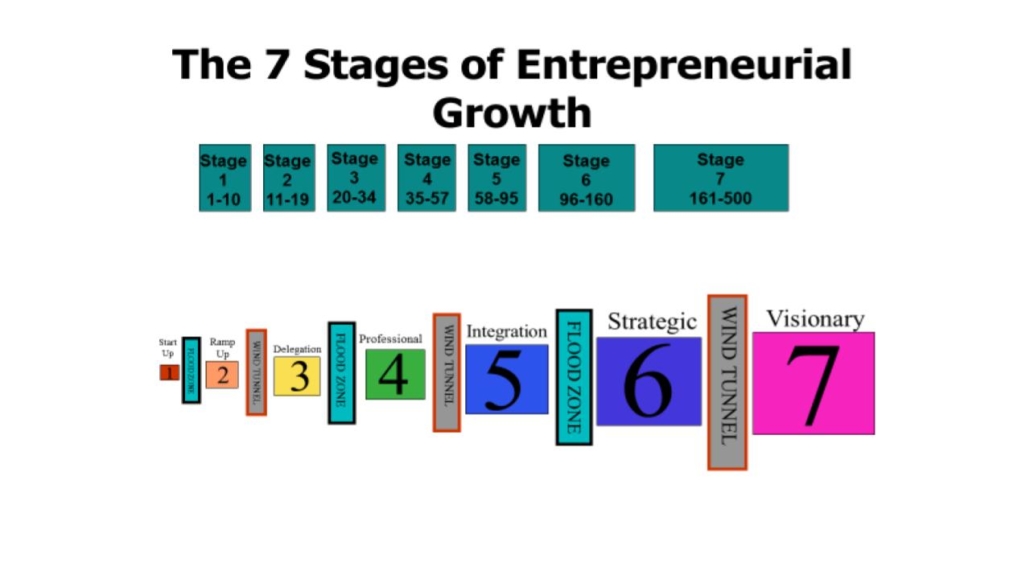Intentionally Navigating Your Company’s Stages of Growth
Suppose Jerry, the CEO of a successful 100-employee manufacturing firm, woke up one morning to a gut-wrenching realization. If something didn’t change soon, his company, which seemed to be charging ahead at 120 miles per hour, would hit the equivalent of a solid concrete wall in about 90 days.
What happened?
Jerry finally admitted that things were not right at his company:
- As the business grew, previously dependable employees were making major mistakes.
- Communication was breaking down between departments and within teams.
- Managers and team members were letting things fall through the cracks.
- Customer orders were going out the door late and with unacceptably high return rates.
- Two of his biggest clients were being heavily courted by a powerful competitor and Jerry sensed he couldn’t keep them much longer.
Why did it happen?
Jerry had always run things conservatively through a sustained period of slow but steady growth ever since he started the company:
- He operated an efficient, organized shop with great products that were selling well at good margins.
- His firm had very little debt.
- Business had been extraordinary in the last 18 months, so he expanded his team from 45 employees to 100, probably a prudent decision given the strong sales and equally positive forecasts.
But if the staffing decision was justified, why were things falling apart before his eyes? Jerry wondered if he was operating his business at odds with certain universal rules for success and, thus, was doomed to failure. He was correct on both counts.
Companies are complex, and like complex adaptive organisms in nature, they are, in fact, subject to seemingly hidden order and principles. The problems that Jerry faced are difficult and rarely corrected with simple solutions.
Understand stages of growth
Organizational research based on an analysis of more than 650 firms offers some insight into how companies with 10-500+ employees proceed through seven distinct stages of growth, which can determine organizational success or failure. Please refer to the graphic below.

What Jerry didn’t realize was that during 18 months period, his company moved from Stage Four (“Professional” – 35-57 employees) directly to Stage Six (“Strategic” – 96-160 employees).
Unfortunately, he was making a classic business owner mistake. He assumed that doing more of the same and following the rules and tactics that made him a success through Stage Four would suffice as his company rapidly expanded.
Apply what you’ve learned
As you grow your company, recognize the appropriate rules at each stage of growth and operate with intention so that you can:
- Adapt to the inconsistencies in your rapidly changing economic landscape.
- Focus resources (people, money, time and attention) on the correct goals and strategies.
- Predict enterprise behavior well in advance of critical decision points.
Creating a sustainable, thriving company requires vision to identify stages of growth along with intentionality to adjust to the next stage and navigate appropriately.
Need help with navigating business growth or leadership coaching? Contact Mission Critical Teams.











